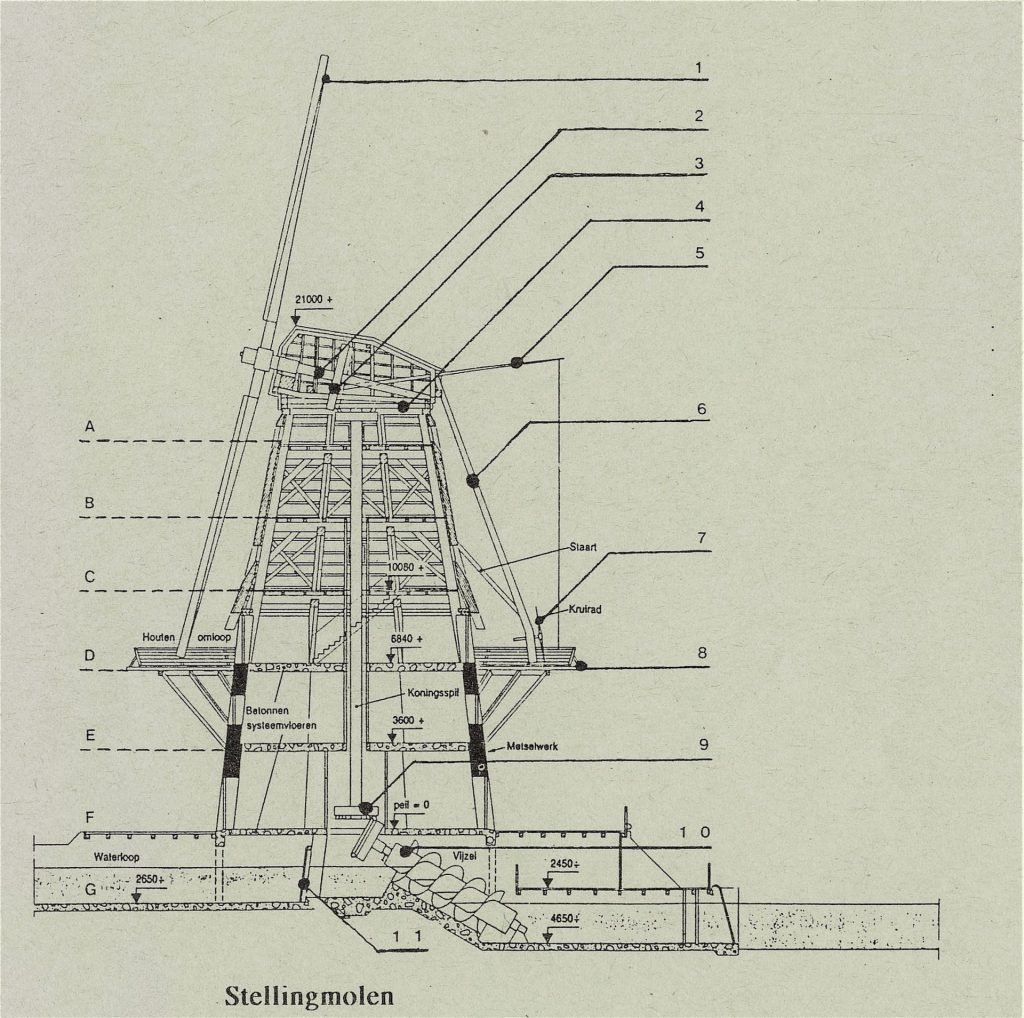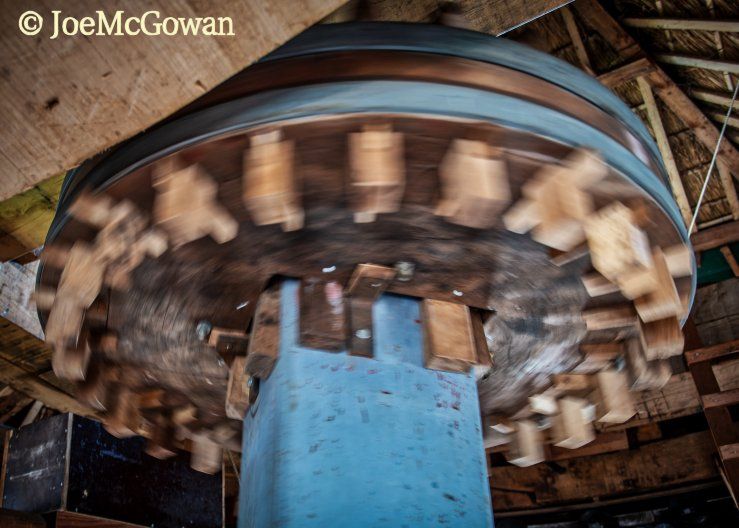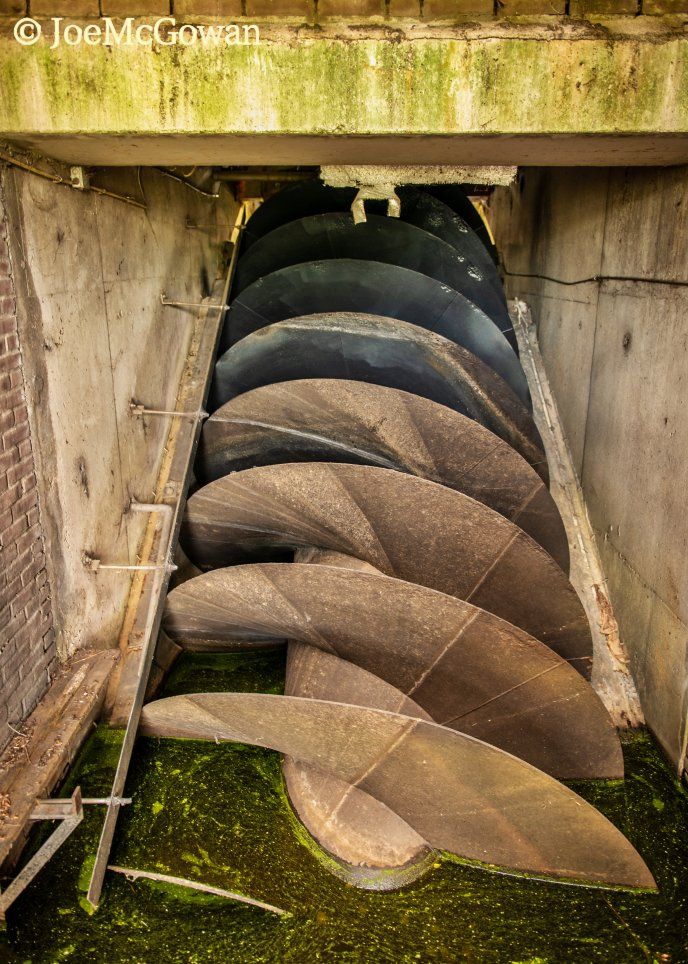The Molen van Sloten is a ‘stand mill’. In order to provide a windmill in built-up areas with sufficient windfall, this was made higher. The work floor of the miller also went ‘up’ to a large balcony around the mill, called the position.
With the designation ‘stelling mill’ this type is distinguished from the ‘ground sailor’. In the case of a ground sailor, the sails and the tail of the mill reach the ground. The miller can then operate the mill from the mill yard.

Explanation of the figures:
1. Stocks, 2 in total, each 26.40 meters
2. Upper horizontal shaft
3. Breakl wheel and catch (brake)
4. Crosswork on 40 iron rolls executed as ‘English crust’
5. Break lever, catcher, also known as a cane
6. Tail beam (middle beam of 5 in the tail, left and right bump)
7. Capstan wheel; to place cap and stocks into the wind direction
8. Platform
9. Lower gearbox
10. Mortar with the auger wheel on the left (Screw of Archimedes)
11. Valve door
Explanation of the letters:
A. Hood or cap
B. 4th attic or loft; millers’ work area
C. 3rd attic with the presentation “Rembrandt in the attic”.
D. Platform; used to be the ground level
E. 1st attic, now the ‘Wedding room’
F. Ground floor, the upper water level
G. Basement, lower water level


A windmill like the Molen van Sloten is a tool that has been using natural energy for centuries, the wind! This shows the mill in different ways to its visitors.
De Molen van Sloten aims to work with sustainable energy systems and thus set an example for others (private individuals, schools and businesses). On the basis of the current climate agreements, much less fossil fuels may be used in the coming years and use of sustainable energy will be encouraged.
Read more. . .